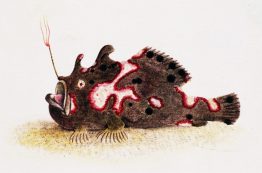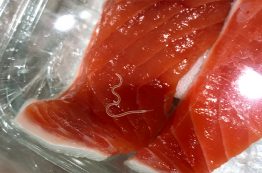I write this from my home office, where I have fashioned a standing desk from an ironing board and a stack of books. In the next room, I can hear my 17-year-old daughter trying to make sense of the virtual classroom environment that has been thrust upon her. It goes without saying that COVID-19 is testing all of us in different ways.
Read more »Anatomy of a frogfish: New book explores world of fishes with arms and legs
Any old fish can swim. But what fish can walk, scoot, clamber over rocks, change color or pattern and even fight? That would be the frogfish. The latest book by Ted Pietsch, UW professor emeritus of aquatic and fishery sciences, explores the lives and habits of these unusual marine shorefishes. “Frogfishes: Biodiversity, Zoogeography, and Behavioral Ecology” was published in March by Johns Hopkins University Press.
Read more at UW News »Ships’ emissions create measurable regional change in clouds
A container ship leaves a trail of white clouds in its wake that can linger in the air for hours. This puffy line is not just exhaust from the engine, but a change in the clouds that’s caused by small airborne particles of pollution. New research led by the University of Washington is the first to measure this phenomenon’s effect over years and at a regional scale.
Read more at UW News »Bird watching from your own window perch
Quarantine and social distancing are teaching us creative ways to interact with each other and the world at large. One way to stay connected with the natural world (and take a much needed break from screens) is to head to your window to watch the goings on of your neighborhood and visiting birds. There are a surprisingly large number of bird species that can be observed right from your living room, depending on the vegetation in your backyard, alley or street.
Read more »‘Sushi parasites’ have increased 283-fold in past 40 years
The next time you eat sashimi, nigiri or other forms of raw fish, consider doing a quick check for worms. A new study led by the University of Washington finds dramatic increases in the abundance of a worm that can be transmitted to humans who eat raw or undercooked seafood. Its 283-fold increase in abundance since the 1970s could have implications for the health of humans and marine mammals, which both can inadvertently eat the worm.
Read more at UW News »





